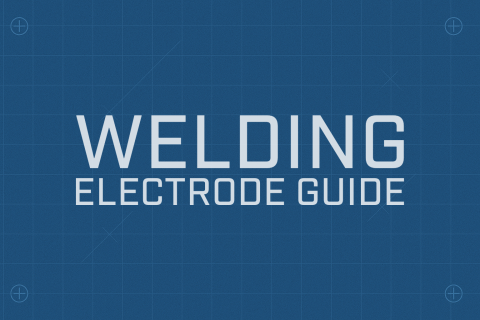Choosing the correct electrode is critical for producing strong, defect-free welds. With so many types available, it’s important to evaluate key factors before deciding. This guide outlines 11 practical steps to help you select the right electrode for your project.
💡 Save on MMA Stick Electrodes:
We stock a full range for carbon steel, stainless, cast iron, hardfacing, and more.
1. Base Material Analysis
- Match electrode type to the base metal (carbon steel, stainless, aluminium, cast iron, etc.).
- Consider strength, ductility, and potential issues such as cracking or porosity.
- Use electrodes that meet or exceed the base material’s mechanical properties.
2. Electrode Properties & Joint Preparation
- Ensure electrode properties (tensile/yield strength) are compatible with the base metal.
- Check if special joint prep (bevels, chamfers, grooves) is required for full penetration.
3. Pre-heating & Post-heating
- Pre-heat thick or crack-sensitive materials (cast iron, high-strength steels).
- Post-heat where necessary to prevent cracking or relieve stresses.
- Follow WPS or material guidelines for correct temperature ranges.
4. Welding Power Source
- Confirm if your machine outputs AC, DC, or both.
- DC is preferred for steel and stainless; AC is often required for aluminium or magnesium.
- Wrong power source = poor arc stability, spatter, and weak welds.
5. Low Hydrogen Electrodes
- Reduce risk of hydrogen cracking in structural steels.
- Use with a machine that supports “Hot Start” for reliable arc striking.
- Store in dry, heated conditions to prevent moisture pickup.
6. Electrode Diameter
- Small diameters: root passes, thin material, detailed work.
- Larger diameters: fill/cap passes, higher deposition, thicker material.
- Always check WPS for recommended sizes.
7. Ventilation & Fume Extraction
- Different electrodes release different fume levels (nickel, stainless, flux-coated).
- Ensure local exhaust or fume extraction is available.
- Use PPE (respirators) in confined or high-fume situations.
8. Electrode Approvals
- Verify compliance with EN ISO (UK/EU) or AWS (US) standards.
- Avoid unapproved/cheap imports – poor quality can lead to failures.
- Reputable suppliers should provide full documentation.
9. Electrode Storage
- Store in dry, room-temperature conditions.
- Use airtight containers or heated quivers for open packs.
- Protect against humidity, as moisture damages flux coatings.
10. Flux Coating Condition
- Inspect before use: no chips, cracks, or irregular coating.
- Damaged flux = porosity, cracking, and arc instability.
- Discard damaged electrodes.
11. Drying Low Hydrogen Electrodes
- These are hygroscopic and must be dried before use.
- Oven dry at 250–300°F (120–150°C) for 1–2 hours, or use a heated quiver.
- Avoid overdrying – follow manufacturer’s specs to protect coating.
Recap
Before striking an arc, run through this checklist:
✅ Analyse the base material
✅ Match electrode properties & diameter
✅ Consider joint prep, pre/post-heat
✅ Check power source compatibility
✅ Ensure fume extraction and ventilation
✅ Verify standards & approvals
✅ Store and dry electrodes correctly
The right electrode = stronger welds, fewer defects, and safer, more efficient projects.




